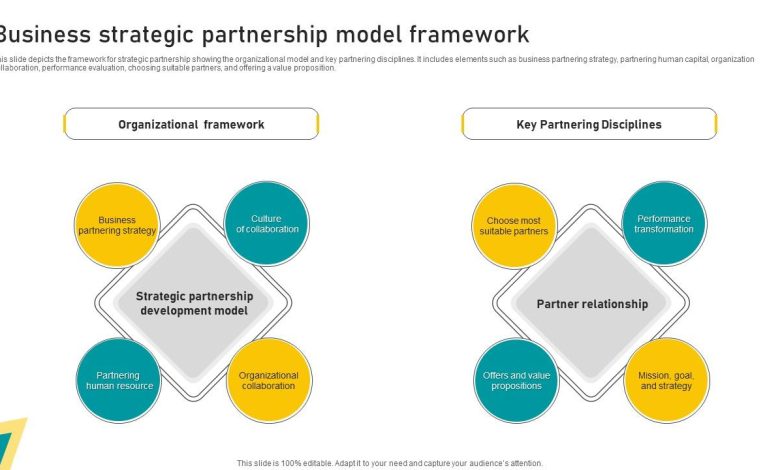Evaluating Partnerships and Collaborations

- Understanding the importance of partnerships and collaborations
- Key factors to consider when evaluating potential partners
- Measuring the success of partnerships and collaborations
- Challenges and pitfalls to watch out for in partnerships
- Strategies for effective communication in collaborations
- The role of trust and transparency in successful partnerships
Understanding the importance of partnerships and collaborations
Partnerships and collaborations play a crucial role in the success of any organization. By working together with other entities, businesses can leverage their strengths and resources to achieve common goals. It is essential to understand the importance of partnerships and collaborations in order to evaluate their effectiveness.
One of the key benefits of partnerships is the ability to access new markets and customers. By teaming up with another organization, companies can expand their reach and tap into new opportunities. This can lead to increased sales and revenue, as well as a stronger competitive position in the market.
Collaborations also allow businesses to share knowledge and expertise. By working with other entities, organizations can learn from each other and gain new insights. This can lead to innovation and the development of new products or services that would not have been possible otherwise.
Furthermore, partnerships and collaborations can help businesses reduce costs and improve efficiency. By pooling resources and sharing expenses, organizations can achieve economies of scale and lower their overall expenses. This can lead to higher profits and a more sustainable business model.
In conclusion, partnerships and collaborations are essential for the success of any organization. By working together with other entities, businesses can access new markets, share knowledge, and reduce costs. It is important to evaluate partnerships and collaborations regularly to ensure that they are effective and beneficial for all parties involved.
Key factors to consider when evaluating potential partners
When evaluating potential partners for collaborations, there are several key factors to consider to ensure a successful and mutually beneficial partnership. It is essential to thoroughly assess each potential partner to determine if they align with your organization’s goals and values.
One important factor to consider is the **reputation** of the potential partner. It is crucial to partner with organizations that have a positive reputation in the industry and among their stakeholders. This can help enhance your organization’s credibility and trustworthiness.
Another factor to evaluate is the **compatibility** of the potential partner. It is essential to assess whether the partner’s values, culture, and working style align with your organization’s. A lack of compatibility can lead to conflicts and hinder the success of the partnership.
Additionally, it is important to consider the **resources** that the potential partner brings to the table. This includes financial resources, expertise, networks, and other assets that can benefit the collaboration. Partnering with an organization that has complementary resources can help maximize the impact of the partnership.
Furthermore, **communication** is key in any partnership. It is essential to ensure that there is open and transparent communication between both parties to avoid misunderstandings and conflicts. Establishing clear channels of communication and setting expectations early on can help foster a strong partnership.
Lastly, it is crucial to assess the **commitment** of the potential partner to the collaboration. Partnering with an organization that is dedicated and committed to the partnership’s success is essential for achieving shared goals. It is important to ensure that both parties are equally invested in the collaboration to drive positive outcomes.
In conclusion, when evaluating potential partners for collaborations, it is essential to consider factors such as reputation, compatibility, resources, communication, and commitment. By carefully assessing these key factors, you can select the right partners to create successful and impactful collaborations.
Measuring the success of partnerships and collaborations
Measuring the success of partnerships and collaborations is crucial for organizations looking to evaluate the effectiveness of their joint efforts. There are several key metrics that can be used to assess the impact of partnerships, including:
- Increased revenue and profitability
- Enhanced brand visibility and reputation
- Improved customer satisfaction and loyalty
- Expanded market reach and access to new audiences
- Greater innovation and creativity through shared resources
By tracking these metrics, organizations can gain valuable insights into the value that partnerships bring to their business. It is important to establish clear goals and objectives at the outset of any collaboration to ensure that both parties are aligned in their efforts. Regular monitoring and evaluation of key performance indicators can help identify areas for improvement and optimization.
Challenges and pitfalls to watch out for in partnerships
When evaluating partnerships and collaborations, it is crucial to be aware of the challenges and pitfalls that may arise along the way. These obstacles can hinder the success of the partnership if not addressed effectively. Here are some key points to watch out for:
- Communication breakdowns: Lack of clear communication can lead to misunderstandings, conflicts, and ultimately, the failure of the partnership. It is essential to establish open and transparent communication channels from the outset.
- Power imbalances: Power dynamics within a partnership can impact decision-making processes and create tensions between partners. It is important to address any power imbalances early on to ensure a more equitable collaboration.
- Diverging goals and priorities: Misaligned goals and priorities between partners can result in conflicting interests and hinder progress. It is crucial to establish shared objectives and a common vision for the partnership.
- Resource constraints: Limited resources, whether financial, human, or technological, can pose challenges to the partnership’s sustainability and growth. Partners must work together to leverage their resources effectively.
- Trust issues: Building trust between partners is essential for a successful collaboration. Trust issues can arise due to past experiences, conflicting values, or lack of transparency. It is important to foster trust through honesty and integrity.
By being aware of these challenges and pitfalls, partners can proactively address them and work towards building a strong and sustainable collaboration. It is essential to communicate openly, address power imbalances, align goals, leverage resources effectively, and foster trust to overcome these obstacles and achieve shared success.
Strategies for effective communication in collaborations
Effective communication is crucial in partnerships and collaborations to ensure that all parties involved are on the same page and working towards common goals. Here are some strategies to enhance communication in collaborations:
- Establish clear objectives and goals from the outset to provide a roadmap for the collaboration.
- Regularly schedule meetings or check-ins to discuss progress, address any issues, and realign strategies if needed.
- Utilize various communication channels such as emails, phone calls, video conferences, and project management tools to stay connected.
- Encourage open and honest communication to foster trust and transparency among collaborators.
- Active listening is key to understanding the perspectives and concerns of all parties involved.
- Provide constructive feedback in a respectful manner to promote continuous improvement and growth within the collaboration.
- Clarify roles and responsibilities to avoid confusion and ensure accountability among team members.
- Be mindful of cultural differences and language barriers that may impact communication in a diverse collaboration.
By implementing these strategies, collaborations can overcome communication challenges and work together effectively towards achieving their shared objectives.
The role of trust and transparency in successful partnerships
Trust and transparency play a crucial role in the success of partnerships and collaborations. When partners trust each other and are transparent in their communication and actions, it creates a strong foundation for a productive and mutually beneficial relationship. Trust allows partners to rely on each other, make decisions together, and work towards common goals with confidence.
Transparency, on the other hand, ensures that all parties involved have access to relevant information, understand each other’s motivations and expectations, and can hold each other accountable. By being open and honest in their dealings, partners can avoid misunderstandings, conflicts, and breakdowns in communication.
Building trust and promoting transparency requires consistent effort and a commitment to fostering a positive and collaborative environment. Partners should communicate openly, share information freely, and be willing to address any issues or concerns that may arise. By prioritizing trust and transparency in their partnerships, organizations can create strong, resilient, and successful collaborations that deliver value to all involved.




